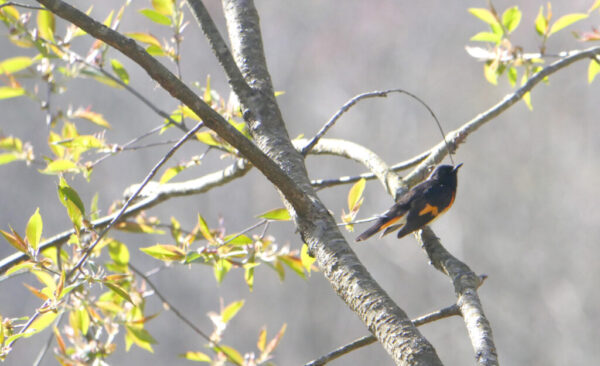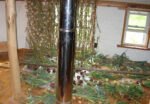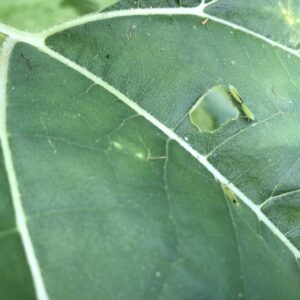A version of this column first ran in the Roane County (WV) Reporter and Times Record. Support local journalism! Subscribe to your local newspaper. This is one of a series of blogs for new gardeners. Read the rest: Part 1. Part 2. Part 3. Part 4. Part 5. Part 6. Part 7. Part 8. Part 9. Part 10. Part 11. Part 12.
Let’s talk about insects, or bugs (entomologists have specific definition for these words, but you and I need not be so formal. If it’s small, runs around or flies, and has more than four legs, it’s a bug to me).
Right away, having escaped the academic morass of definitions, we get into moral quandaries. What is a “good bug” and what is a “bad bug”? I’m perfectly comfortable with a self-centered definition—a bad bug is one that eats my crops before I do, and a good bug is one that eats bad bugs before they eat my crops. Unfortunately, I don’t know all that much about who’s who, and my vision isn’t what it used to be either, so if I’m looking at a bug that’s a quarter inch total and trying to decide whether it matches an image or description, well—there’s going to be guesswork.
Spiders I leave alone. I think hardly any of those bother crops, and they want to eat the bad bugs. I do recognize a few bugs—ladybugs of course are our friends, on the hunt for aphids. Japanese beetles are enemies—but I hardly see those since I quit trying to grow roses. Flea beetles I see every year, or at least the evidence of them—they chew tiny holes in a wide variety of crops in spring, but they seem to disappear with summer heat, having not done serious damage (except to eggplants). Praying mantises are vicious predators, worth protecting—they even devour those nasty brown marmorated stinkbugs that now invade homes all winter, and attack tree and vegetable fruits all summer.
Some people express alarm about tomato hornworms, which are fat, two-inch green caterpillars with a pinkish “horn” on the tail end and diagonal white stripes down the sides. They can damage a lot of tomato leaves, but usually there aren’t many and you spot them before they’ve done much harm. Sometimes you see the chewed up leaves, sometimes you see the oddly square, dark-green waste pellets—big as these bugs are they can be hard to spot. You can just mash them or drop them in soapy water—I carry them off to my chickens for a special treat. Sometimes you see one of these with a bunch of white rice-like things sticking out the back—these are the eggs of a wasp which will eat the worm, so you’re supposed to leave the worm alone to suffer this fate, and thus expand the population of those wasps.
You can carry hornworms about, but I have found three kinds of caterpillars that do sting. There is a bristly solid black one, a delicate white one, and a fat one in green and blue and orange that looks like it was designed by someone on drugs. Unless you are allergic to bee stings, there is little to worry about if you encounter bees in your garden; they’re not interested in you, they’re interested in whatever is flowering.
Some years I have enough Colorado potato beetles to create a problem, given how many potatoes I grow; these are humped, half-inch black and yellow striped beetles with reddish heads; they lay clusters of tiny orange eggs which become reddish, spotted squirt-like larvae. All can be crushed by hand but if there get to be too many you can spray with spinosad, which is a naturally occurring organism.
My worst bug problem is definitely the two species of worms which attack cabbage family members—I get those every year, multiple times. A white butterfly with a black spot on the wings is the culprit in one case, and smaller multicolored one in the other. They can be crushed but sometimes there are just too many, and fortunately there is another naturally occurring organism, the bacteria called Bt (bacillus thuringiensis) which does a fine job of disappearing these. You can find the products for these sprays in any farm supply place.
Some years my brassicas are attacked late in the year by harlequin beetles. These are bright red and black beetles. Their appearance, if they show up, is brief but they can do a lot of damage quickly.
A couple of years I had four-lined plant bugs in June, which damaged my basil and ironically, mostly my tansy—which I grow mostly as a host plant for predator bugs. But after filling the leaves with dark spots, they disappear.
On the whole the solution to bug problems is to be friendly with everything that eats them—birds, predator bugs, lizards and toads and snakes. Having a variety of flowering plants in or near your garden helps attract and feed these—and you get flowers, too!
Yes, you can find all manner of poisons to kill bugs…and the predators that eat them, which may make your problems worse in the long run. I prefer the organic approach. Spinosad and Bt are toxic to specific types of bug, are naturally occurring organisms, and you use them in a small part of your garden when you actually have a problem. This is very different from repeatedly drenching your whole garden in broad spectrum poisons—which is how commercial crops are raised, one of the reasons to have a garden.














